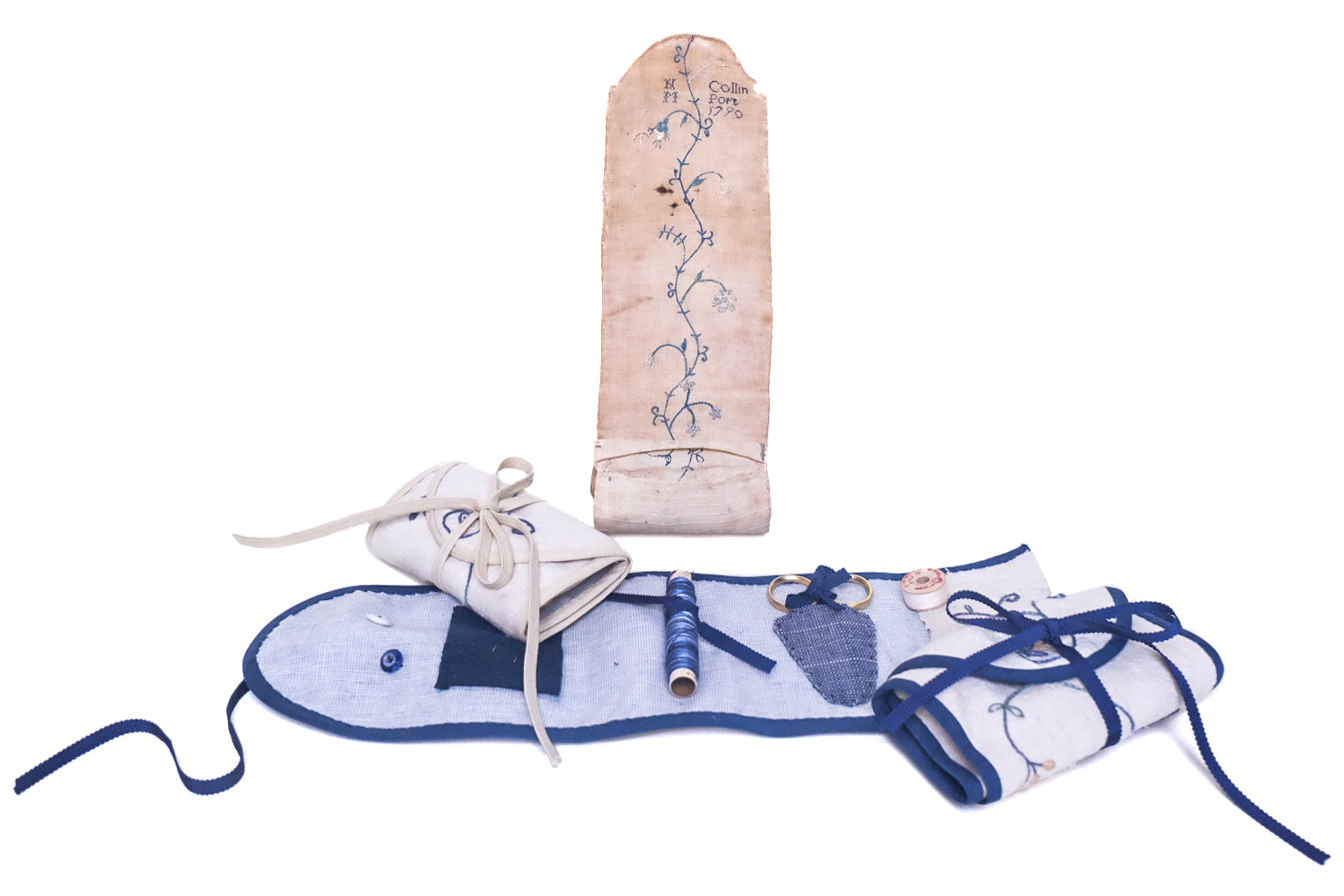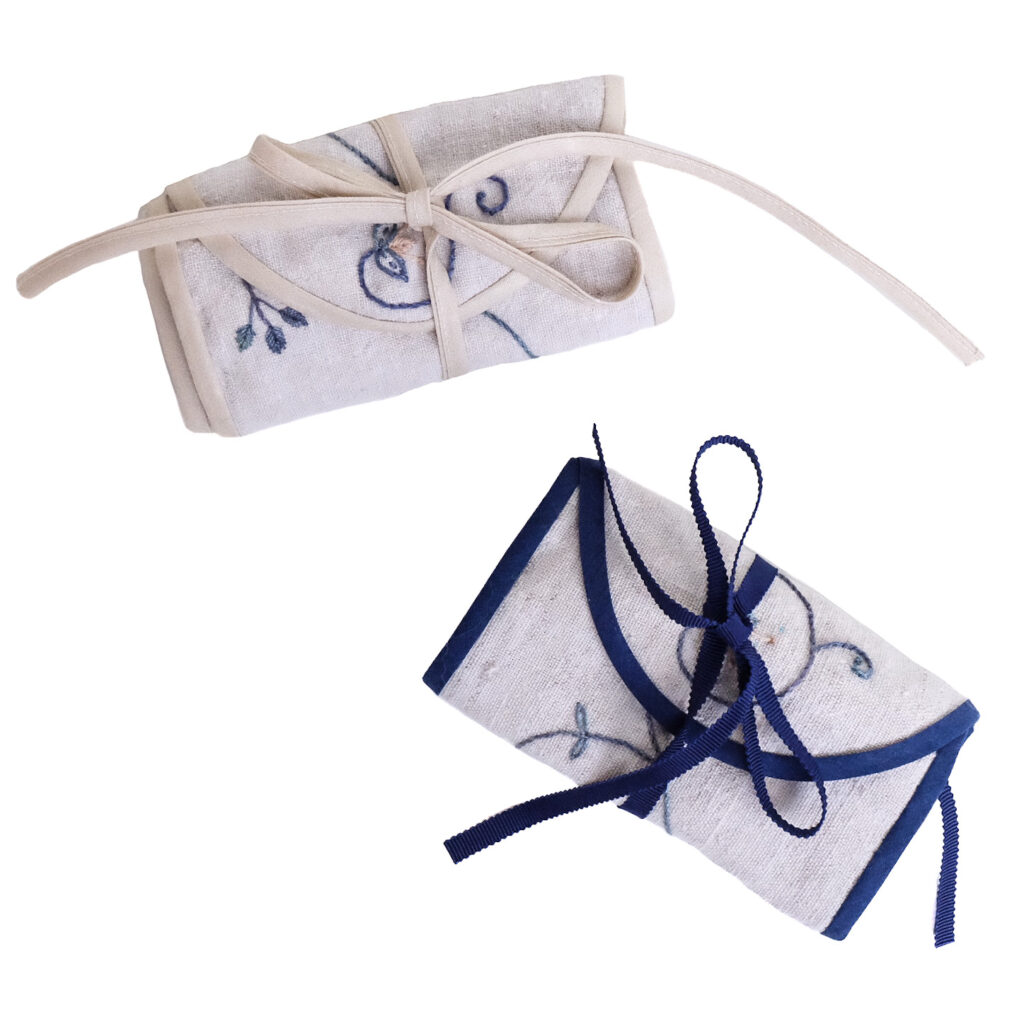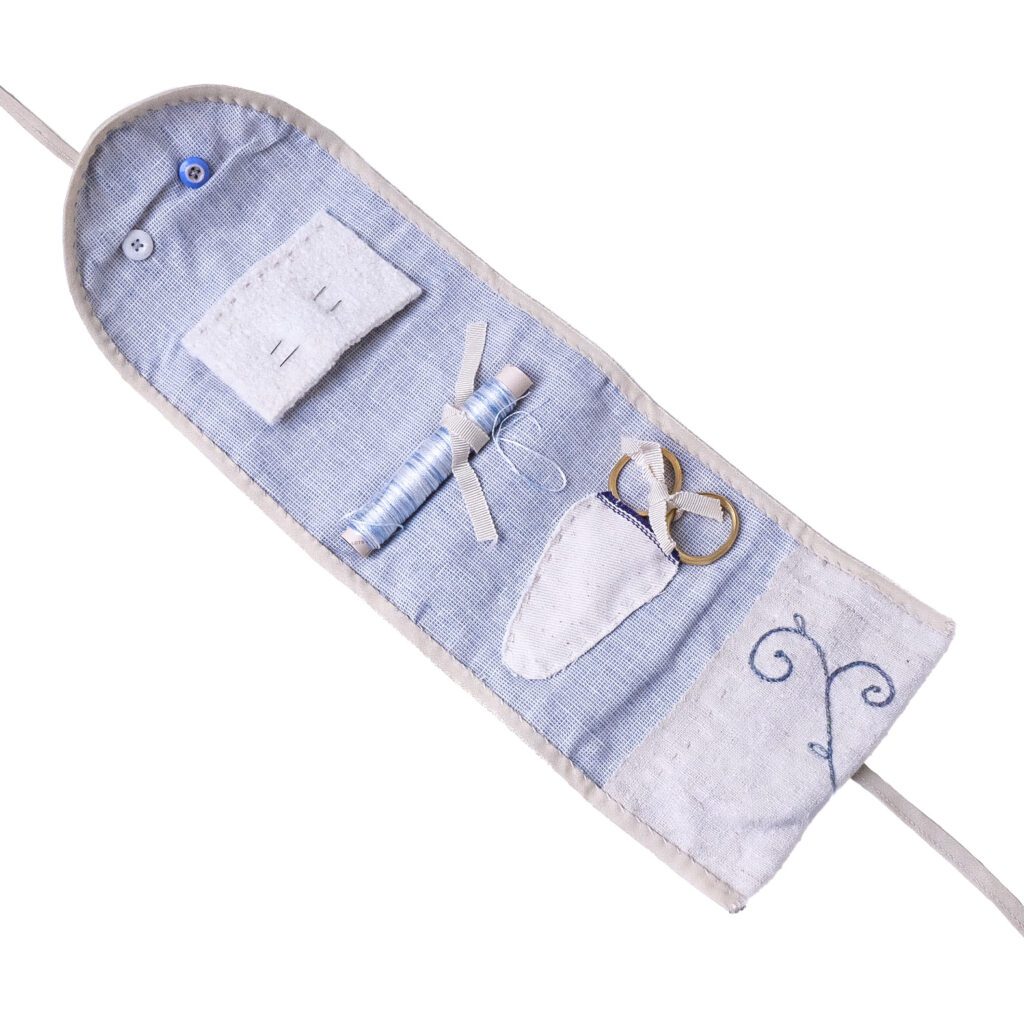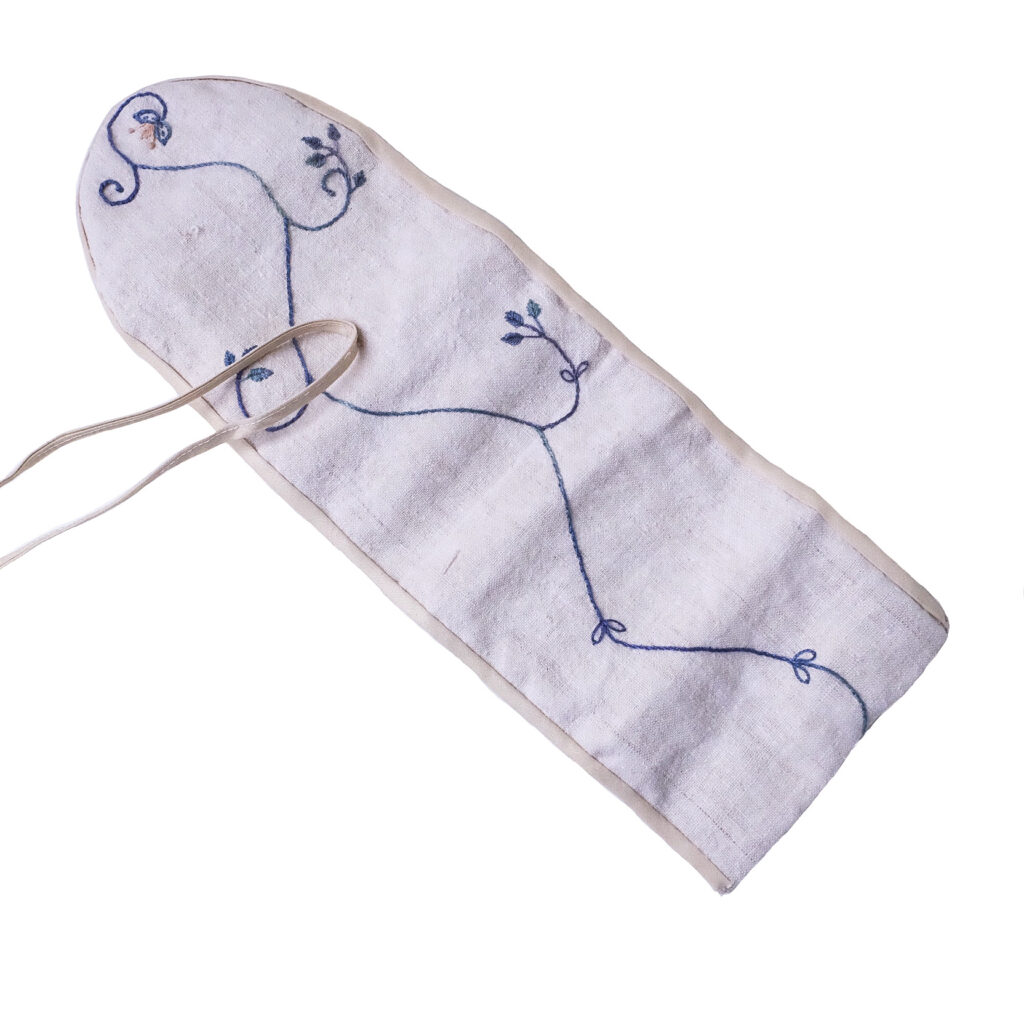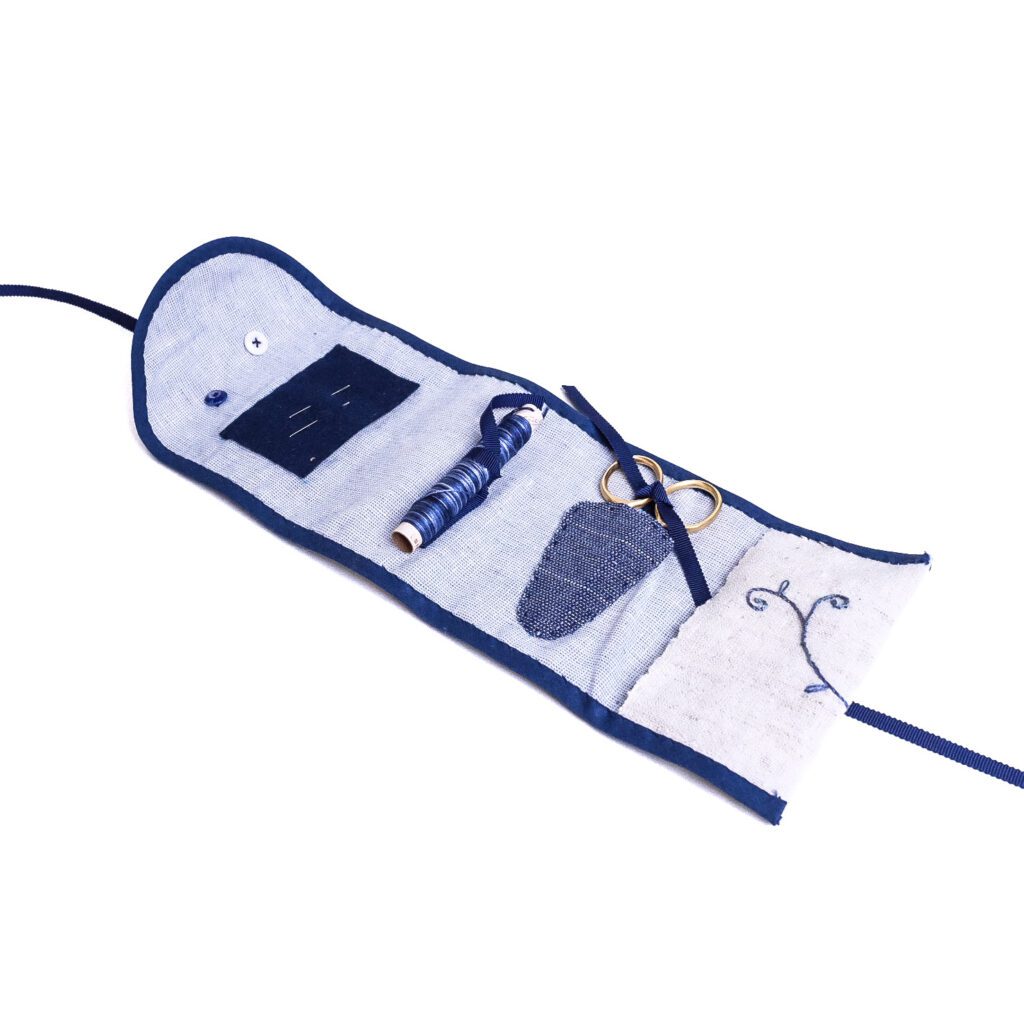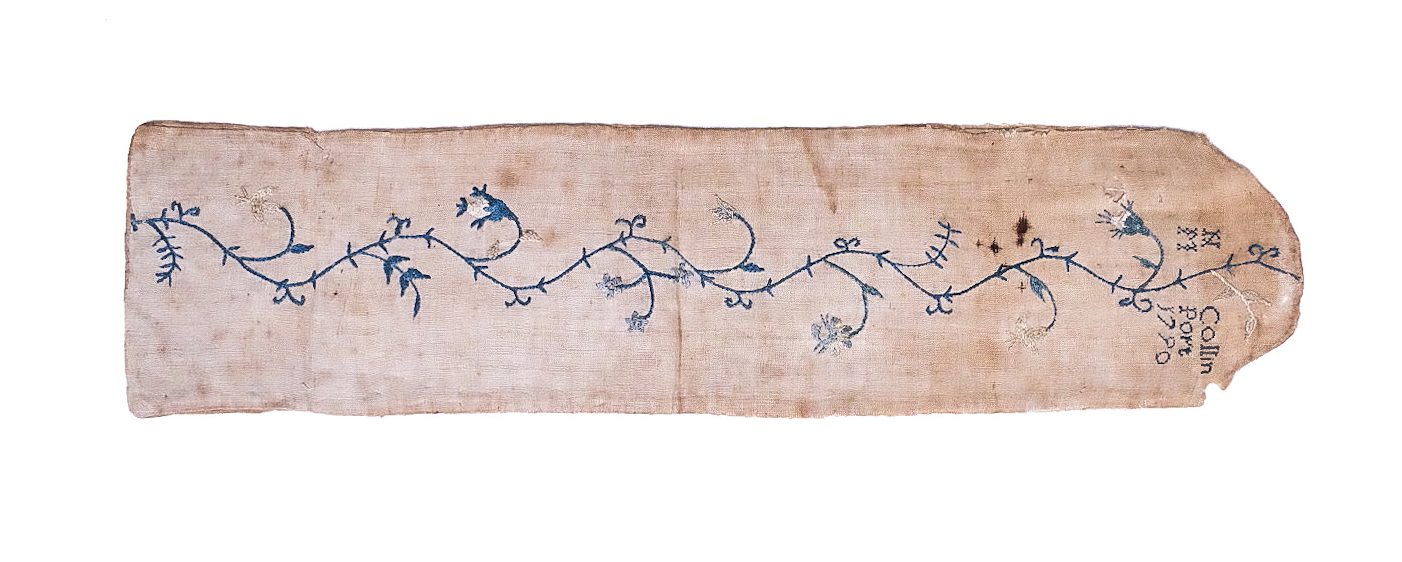
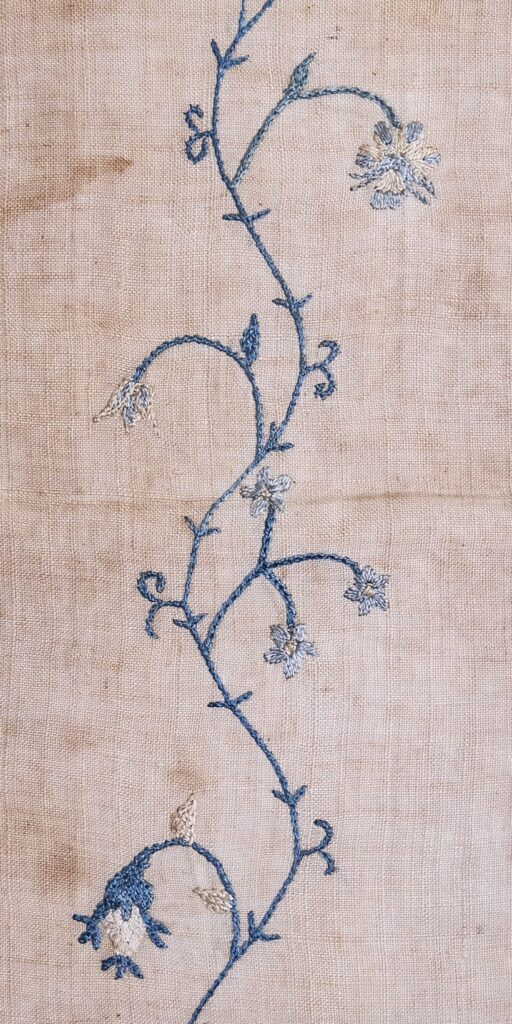
Sewing rollups, sometimes also called Huswifs (housewives), Sewing Rolls, or Mending Rolls, are historical objects used for holding various sewing tools and notions. They are long and rectangular in shape, meant to be folded a few times, compacted, able to tuck into a pocket. Once folded, a ribbon or cloth tie secures it closed. Sewing rollups are made this size to be portable, to accompany the sewist on daily outings or travel. Historically, the rolls were often adorned on the outside for aesthetic value, with compartments on the reverse to hold scissors, buttons, needles, and the like. Though there are formal similarities from rollup to rollup, each one was crafted to honor the owner’s personal needs and preferences. The inner compartments might range from pouches, to needle pages, to thimble holders. Sewing rollups were often made from scraps and remnants of a range of materials from other projects, making each one even more personal to the owner or maker, as the pieces patched together are imbued with story.
Viewing the sewing rollup for the first time, I was immediately struck by the care and tenderness of the stitching, the attention to design and color, and the construction of the object. This artifact is part of our Glee Krueger collection. It contains one large pocket towards the bottom, and four open ended cylindrical channels for securing supplies. An embroidered floral vine, ranging in color from deep blue to cream, runs along the length of the outside. The vine is a joyful, meandering chain-stitch. The flowers are done in a satin stitch. The blue vine creates a deep contrast, while the flowers interplay softly with the natural, hand woven fabric. It is dated 1790 in an embroidered inscription that reads “NM / Collin Port 1790.”
Though we may not know specifics about the maker or the owner of this sewing rollup, we get glimpses through the details in the object itself. That it’s intact 231 years after its creation is a testament to the care in its handling. The stitches are wondrously small, careful, and incredibly even. The embroidery is delicate and devoted. I can imagine all the buttons and seams repaired with the tools this piece once held, and by the hands that held them. Care and attention are visible throughout, inspiring us as makers and lovers of cloth.
Inspired by this object in our library, Tatter’s sewing rollup was thought up, designed, and produced by the Tatter team, with embroidery by artist Chika Cuy, in a limited edition. Creating an object in homage to this artifact, we are reminded of the beauty and tenderness of the hand sewn. We are reminded of the value in finding and creating beauty in objects meant to be used.
